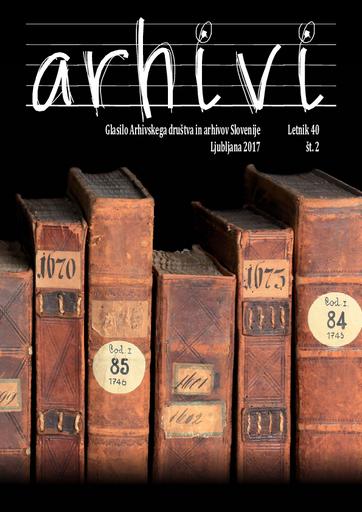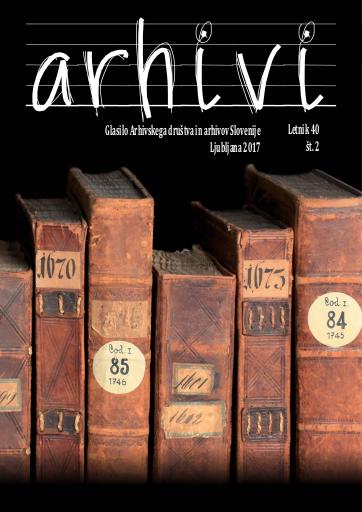/
Serijske publikacije
/
Arhivi
Arhitektura kapucinskega reda znotraj meja redovnih provinc. Primer nekdanje Štajerske kapucinske province


To delo avtorja Tanja Martelanc je ponujeno pod Creative Commons Priznanje avtorstva-Nekomercialno-Deljenje pod enakimi pogoji 4.0 Mednarodna
Datoteke (1)

Opis
Kapucinsko umetnost je treba raziskovati znotraj provincijskih meja oz. v povezavi z matičnimi provincami, ki so dotično provinco v preteklosti ustanovile in vplivale tako na njeno redovno arhitekturo kot tudi na slikarstvo in kiparstvo. Za gradbeno dejavnost znotraj province so bili v 16., 17. in 18. stoletju po večini odgovorni kar kapucini sami, ki so v svojih vrstah poznali redovne arhitekte oz. gradbene nadzornike, v virih imenovane fabricieri. V svojih redovnih pravilih so zato zapisali, da mora vsaka provinca izbrati štiri brate, ki so dobri in pobožni. Ti so morali narediti ali potrditi načrt za vsako novogradnjo ali prezidavo, skrbno so morali bedeti nad celotno gradbeno dejavnostjo znotraj ene province, kar je v praksi za nekdanjo Štajersko kapucinsko provinco veljalo vse tja do druge polovice 18. stoletja, ko so gradbeno dejavnost največkrat pod taktirko gvardijanov prevzeli laični arhitekti in stavbeniki.
Metapodatki (12)
- identifikatorhttps://hdl.handle.net/11686/41537
- naslov
- Arhitektura kapucinskega reda znotraj meja redovnih provinc. Primer nekdanje Štajerske kapucinske province
- Architecture of Capuchin Order within the Boundaries of Orders’ Provinces. The Example of a Former Capucin Styrian Province
- avtor
- Tanja Martelanc
- soavtor
- Gregor Jenuš (gl. in odg. ur.)
- Dunja Mušič (teh. ur.)
- Petra Markuš (prev.)
- Tanja Martelanc (foto.)
- predmet
- ČLANKI IN RAZPRAVE
- kapucinska arhitektura
- redovni umetniki
- redovni arhitekti
- redovni nadzorniki
- fabricieriji
- Štajerska kapucinska provinca
- slovenski kapucinski samostani
- ARTICLES AND PAPERS
- Capuchin architecture
- monastic artists
- monastic architects
- monastic supervisors
- fabricieri
- Capuchin Styrian province
- Slovene Capuchin monasteries
- opis
- Province boundary is most frequently also the boundary within which Capuchin monastic artists were active, with only few of them active also outside of it. Boundaries were most frequently crossed mainly by Italian Capuchins when they started establishing new provinces outside of present-day Italy at the end of the 16th and the beginning of the 17th centuries. At that time four fabricieri, all good and devout friars, supervised and led constructions of monastery housing both at home and in the newly established provinces, thus ensuring that in the mother provinces established floor plan transferred to subsidiary provinces. These monastic construction supervisors are not particular to Capuchin order, as they are well known by other orders, for example, friars minor from whom capuchins seceded. The primary obligation of fabricieri was to ensure that newly built monastery houses did not deviate substantially from the concept of Sacred Poverty as advocated by Saint Francis of Assisi. They also needed to ascertain whether the houses given to Capuchins are simple and modest, appropriate to house their monastic community. Close monitoring of reconstruction and extensions of monasteries was necessary in order to approve every plan. In Capuchin Styrian province to which the majority of monasteries on our soil belonged, several fabricieri are known by name. Two of the most interesting fabricieri are named in the book of cathedral chapters after the mid-17th century. They were qualified master builders from Lombardy, f. Florencijan and f. Jožef from Ponn. Fabricieri monitored construction activities until the second half of the 18th century when most frequently reconstructions and additions were decided by guardians who entrusted their wishes to secular architects and construction engineers. For this reason, the 19th, the 20th and the 21st centuries are not periods of the typical architectural design of Capuchin monastic housings as it slowly started to merge with concurrent sacral architecture.
- založnik
- Arhivsko društvo Slovenije
- datum
- 2017
- 01. 01. 2017
- tip
- besedilo
- jezik
- Slovenščina
- jeDelOd
- pravice
- licenca: ccByNcSa
